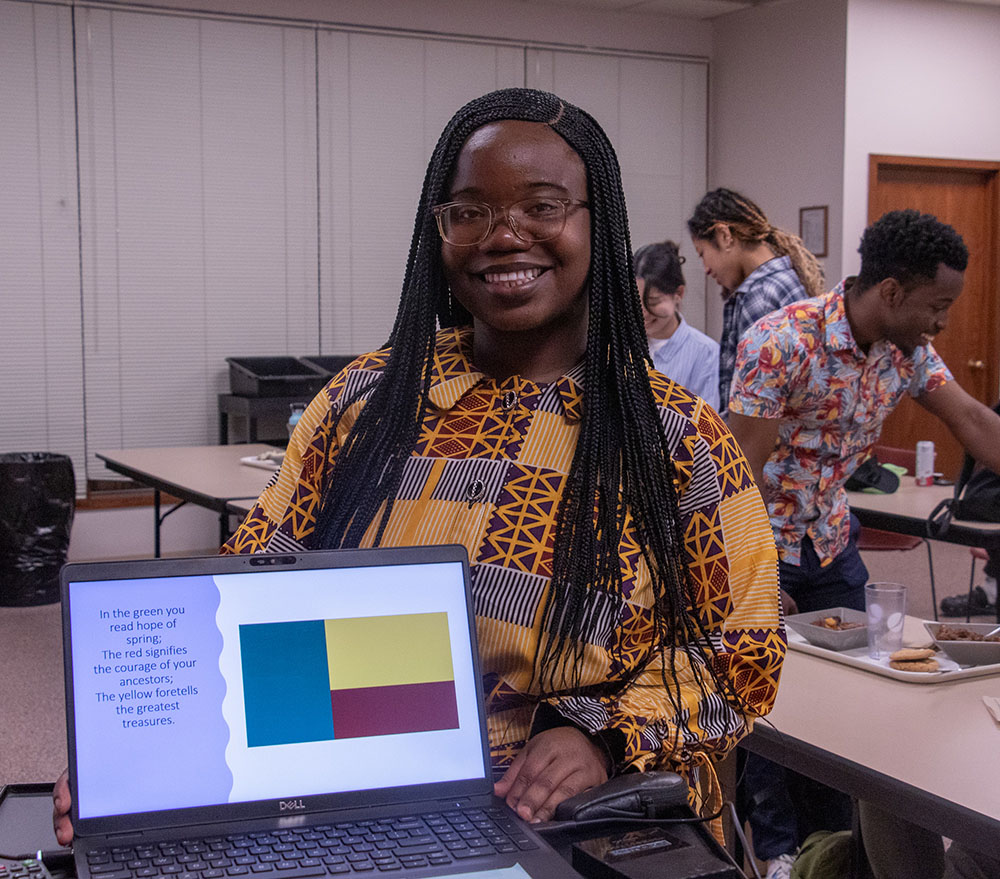Tchona presents on the Benin Republic

CHADRON – CSC International Club member Emmanuella Tchona presented on her country, Benin Republic, for the April Dine with Us. Her presentation included facts about her country’s geography, anthem, national seal, languages, tribes, food, music, politics, and history.
Tchona mentions that Benin Republic is bordered by Togo to the west, Nigeria to the east, Burkina Faso to the northwest, and Niger to the northeast. About 12.8 million people live there and it is about 113,000 square kilometers. It operates on West African time which is about seven hours ahead of the U.S. The country is home to 12 departments, or states. Benin has no prime minister, however, it does have a president, Patrice Talon who was elected in 2016. Although the country’s capital city is Porto-Novo, the seat of governance resides in Cotonou.
Tchona explained the national flag and seal. Benin’s flag colors are green, yellow, and red. The national seal of Benin was originally introduced in 1964 and was readopted in 1990. At the top of the emblem is the national crest that consists of two horns with corn in the ear and filled with sand. These stand for prosperity. Below the crest is a shield that contains the actual coat of arms of Benin. The shield has four quadrants. The top left quadrant contains a castle in the style of the Somba, representative of the history of Benin. In the top right quarter, is the Star of Benin, the highest award of the nation. Below this is a ship, that stands for the arrival of Europeans in Benin. In the lower left quadrant is a palm tree.
Benin was home to the Amazon warriors during the early 1900s. They were women warriors who were heavily involved with emancipating the country. They played a major role in the war between the French soldiers and the Benin kingdom against colonization.
The major languages in the country are French, Fon, and Yoruba. It is home to tribal groups like the Igbo Idaasha, Bariba, Fon, and Adja. Tchona said these tribes originated from other countries but settled in Benin. The Igbo Idaasha originated in Nigeria, the Bariba people migrated from the north of Nigeria, and the Fon tribe has roots in Nigeria. The Adja tribe has its home in Togo and Benin.
“Benin has about 60 tribes in total, but I chose to focus on the main four. The others are like subdivisions of these four main ones,” Tchona said.
She also described some of Benin’s staple foods like wasa wasa, red eba, rice and beans. Tomatoes and peppers are a major part of their diet. They also make a lot of snail and seafood dishes.
Category: Campus News, Belongingness and Inclusion, International Students
